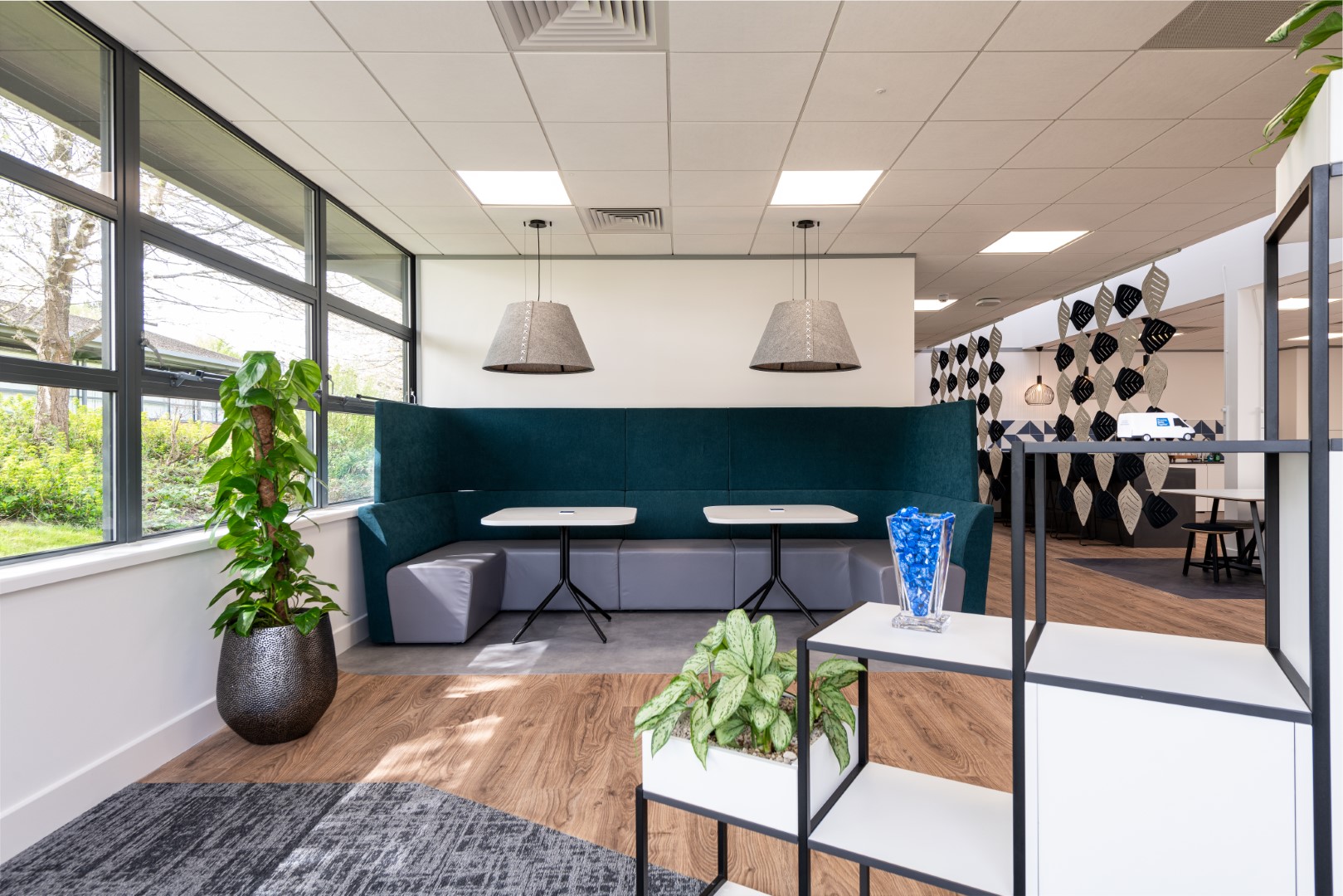Tenant expectations in the commercial property sector are evolving faster than ever. According to a recent LMG survey, 88% of UK landlords say tenant demands have increased significantly over the past two years. This shift, driven by hybrid working and new workplace priorities, is forcing landlords to rethink their approach—placing a stronger emphasis on employee experience, sustainability, smart technology, and lease flexibility.
In this article, we explore the key trends shaping the commercial office landscape, supported by current data, expert insights, and project examples to inform your commercial fit out decisions.
- Less Space, Higher Quality
The hybrid work model is changing how companies view office space. Instead of occupying large, traditional offices, many businesses are downsizing in favour of smaller, high-quality environments. These new spaces are designed to complement home working—offering something employees can’t get remotely.
Features such as collaboration hubs, attractive amenities, wellness areas, and strong design schemes create ‘commute-worthy’ offices that boost both engagement and retention. As Rap Interiors Director Parry Anderson notes, “It’s always the better-quality spaces near transport links and amenities that go first. Landlords may benefit from subdividing large offices into smaller, premium units to attract a wider range of tenants.”
- Collaboration-Focused Design
Collaboration remains one of the biggest incentives for returning to the office. Around 30% of landlords have reported an increase in requests for flexible, collaborative workspaces that support creativity and communication.
Modern office designs are moving beyond standard meeting rooms to include informal, multipurpose zones—such as laptop lounges, bleacher seating, and breakout kitchens. These areas allow employees to engage naturally, strengthening workplace culture in ways digital meetings can’t replicate. Take a look at Ward Security’s office fit out project where they have done just this.
- Smart Office Technology
Technology continues to play a pivotal role in office design. As an office refurbishment company, we have seen a surge in tenants now seeking smart office features that enhance operational efficiency, safety, and user experience.
Common technologies include:
- Biometric Access Control – Secure entry using facial recognition or fingerprints
- Desk Monitoring Systems – Real-time occupancy data to optimise layouts and reduce energy waste
- Digital Booking Platforms – Easy booking of desks, rooms, and parking, with visibility of who’s in the office
Smart systems also extend to intelligent lighting and HVAC, which automatically adjust based on occupancy and environmental conditions.
- Sustainability as a Priority
Sustainability is no longer optional—it’s expected. Over 56% of landlords say tenants now demand high environmental standards in office buildings. From a tenant’s perspective, green spaces not only support corporate ESG goals but also help attract and retain talent.
To meet this demand, landlords are turning to BREEAM-certified buildings, sustainable fit-out practices, and partnerships with contractors who hold green accreditations. These partners prioritise responsible waste management, use of low-impact materials, and logistical efficiency to reduce carbon output during builds and renovations.
- Operational Flexibility
Flexibility is emerging as a non-negotiable feature for tenants. Nearly half (46%) of landlords report that tenants want the ability to modify or adapt spaces as their needs evolve.
This is particularly important for start-ups and growing businesses, who may not have long-term clarity on team size or office requirements. Flexible design elements—such as demountable partitions, modular furniture, and adaptable layouts—allow companies to scale up or down without committing to costly overhauls.
- CAT A+ Fit Outs
The traditional long-term lease model is being replaced by more agile options. In response, landlords are increasingly offering CAT A+ fit outs—pre-fitted, furnished spaces that allow tenants to move in and start working immediately.
These “plug and play” environments are ideal for companies seeking a hassle-free setup without long-term obligations. For landlords, CAT A+ offers a competitive edge, especially when targeting small businesses or those testing hybrid arrangements.
Commercial Office Design Trends – Conclusion
Commercial office design is undergoing a major transformation. Today’s tenants are more empowered, more selective, and more focused on aligning their office environments with business values—whether that’s flexibility, sustainability, or user experience.
To remain competitive, landlords must evolve with these expectations. That means offering spaces that are ready-to-use, adaptable, tech-enabled, and environmentally responsible. Those who do will not only improve occupancy rates but also attract the kind of forward-thinking tenants that define the future of work.




